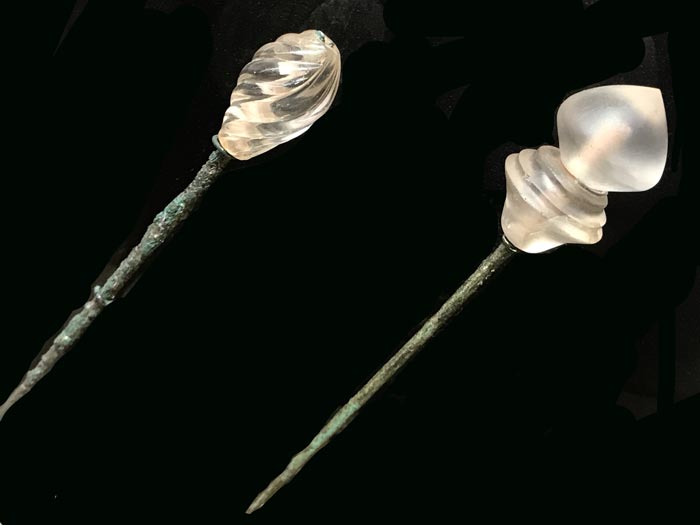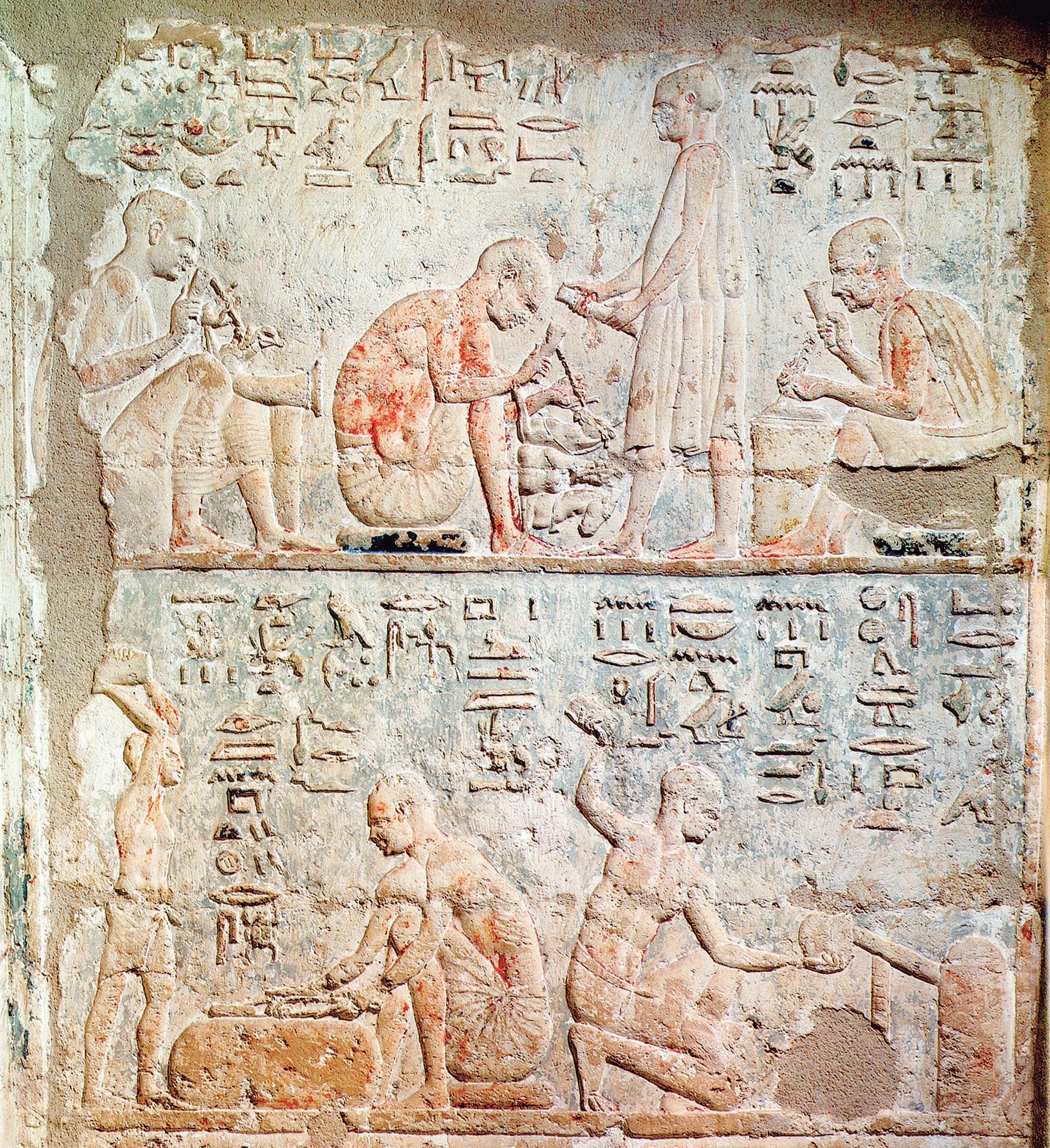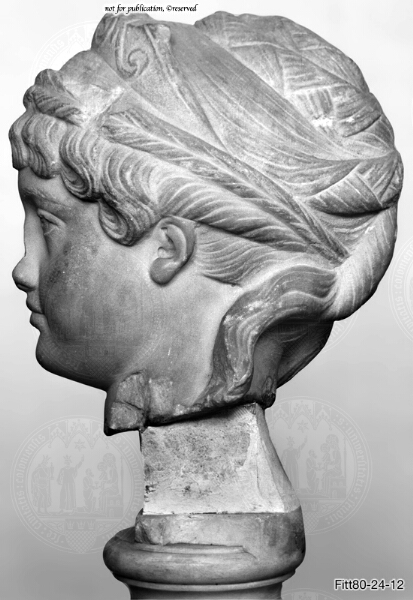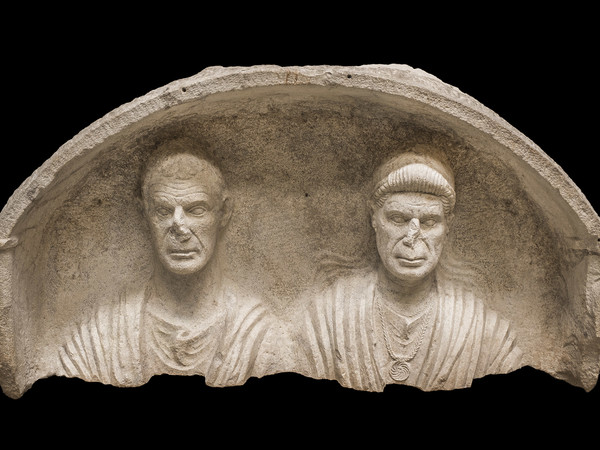
Gems of Heaven pp 138
“3.1. The princess in Venice
In the Museo Archeologico Nazionale in Venice there is a charming small head (3 cm) in aquamarine (Pls 6a–d), identified at different times and by different scholars mainly as Cleopatra VII, although Sabina too has also been suggested.
Aquamarine is quite rare in Roman glyptic both for its high value and for its hardeness (7.5–8 on Moh’s scale) and among
the ‘precious sculptures’ it amounts to less than 1% (Table 1).
It is noteworthy that another famous specimen is the intaglio portrait of another princess who lived a generation earlier:
(Flavia) Julia Augusta, daughter to Titus and Domitian’s mistress, signed by the engraver Euodos. The coiffure of the
Venice head, on the top and on the back, is clearly not finished or reworked. Where it is better preserved, over the forehead and on the temples, it is characterised by a central, rather accentuated parting of the hair, which is arranged, at each side of it, in at least four rows of waved locks, combed diagonally to the back of the head. The forehead is framed by the beginning of the lower part of each lock, worked with a small hole. The locks framing the face are six at each side of the central partition. In front of the ear there is a curl, better preserved on the right side of the face. Beyond this wavy section, there is a deep groove; and, beyond again, the skullcap is simply roughshaped, with circular depressions, meant as a fixing system for a headgear in a different material. On the nape, the locks are twisted (the direction of the twisting is always toward the central axis of the head) and combed up to the smooth skullcap.
As a first step, we can exclude Cleopatra VII. Cleopatra’s famous nose was markedly convex throughout its length, from
the eyes to the tip (Pl. 7); while the Venice head shows a truly aquiline nose, slightly convex but with a more prominent
‘bridge’. Cleopatra’s coiffure is also different: both on coins and in the few sculptural portraits attributed to her, she wears a typical Melonenfrisur: the thick locks are twisted (not waved) and combed parallel from the forehead and the temples to the nape, where they are arranged in a sort of ‘open’ chignon. Moreover, Cleopatra, as a Hellenistic ruler, is represented with the diadema, in the fashion of the late Hellenistic age. No trace of it can be seen on the aquamarine head, even on the nape, which still preserves its locks, but no sign of the knot of the diadema.
Comparison with another small head, in the same material and of almost the same height (2.8 cm), in the Museo Archeologico Nazionale in Florence (Pls 8a–d), makes clear that the portrayed lady in Venice is Sabina, the wife of Hadrian.
On the Florence head, she wears her ‘turban’ hair dress (Type Carandini VA3a) with a stephane and a wide-nested chignon formed by loose hair (not by thin plaits), which, according to coin types of the mint of Rome, seems to have been worn by Sabina between ad 134 and 137 (iconographic period VIII).
Reducing the two aquamarine heads of Sabina to the same scale, the result is that the profiles of the Venice and Florence
Sabinas can be perfectly superimposed, although the mass of the Venice coiffure has been consistently reduced.
The problem, at this stage, is the coiffure of the Venice Sabina. The original look of this ‘new’ Sabina coiffure can be seen in some other marble heads….”

“Games of Heaven” pp 139

Miniture head of a Roman woman in aquamarine. Hadrianic period. Height: 2.6 cm.
Florence, Museo Archeologico Nazionale.
source: Plate 20b in Roman Portraits in Context by Jane Fejfer
Both aquamarine heads as described by Federica Grossi in CORONAE, STEPHANAI E DIADEMATA. MANUFATTI PER IL CAPO E SIMBOLI DEL POTERE FEMMINILE pp. 400-401

All-round carving depicting the head of Empress Sabina, on a modern gold frame; 28 / 18 mm
In Florence, National Archaeological Museum, n. inv. 14547.
Origin: unknown. Formerly part of the Pietro Andrea Andreini collection, from 1731 in the Medici dattilioteca.
Dating: some scholars place the portrait between 125-140 CE, while others prefer to narrow the range between 134-137 CE.
Description: all-round portrait of the empress Vibia Sabina with her head turned slightly to the left. The face has a round and full shape, with thin and spaced eyes, a straight nose but with a small hump at the hairline and a mouth with fleshy lips, with Sabina’s characteristic labialasal sulcus. The hair is divided by a central parting and is brought to the sides of the face in two bands composed of many small wavy and dense locks which, at the nape of the neck, are crossed and rolled up on the head to form a crown, with a knot of hair in the central part; the ears are covered only in the upper part.
Type of ornament: type I stephane, variant A.
Sabina wears a simple stephane diadem, with a half-moon shape and a band without decorations.

Head of Empress Sabina, wife of Hadrian, reworked in the Constantinian age for the appearance of Flavia Iulia Helena (St. Helena, mother of Emperor Constantine the Great. H. 30 mm; width. 11 mm; thickness 22 mm
In Venezia, Museo Archeologico Nazionale, n. inv. G 150
Origin: unknown. Formerly Grimani collection.
Description: head of the empress Vibia Sabina, wife of Hadrian, turned and tilted slightly to the right. The face has a round and full shape, with thin and spaced eyes, a straight nose but with a small hump at the hairline and a mouth with fleshy lips, with Sabina’s characteristic labialasal sulcus. The hair is divided by a central parting on the sides of which wavy locks are arranged from one ear to the other, in front of which a small curl escapes; on the nape they are instead divided into nine locks rolled and combed towards the top of the head. The rest of the hairstyle was reworked in a rather coarse way to try to eliminate the details and make the top of the cap completely smooth, probably to accommodate part of Elena’s golden hairstyle that would have covered the cap anyway.
Type of ornament: not identifiable. At the hairstyle, the hair is raised perhaps for placing a stephane diadem made of another material, with a good metallic probability.
Pictures by Fae Amiro
Ph.D. Thesis – Fae Amiro; McMaster University – Classics 2021
THE PORTRAITS OF THE ROMAN EMPRESS SABINA: A NUMISMATIC AND SCULPTURAL STUDY
“The provenance of the piece is unknown, so the authenticity of the piece cannot be confirmed. If it is ancient, it is certainly a representation of Sabina. The face appears older than it usually does in sculpture, having a closer resemblance to the coin portraits.
This makes sense given the evidence that the same workers who made coin dies also made cameos and gems. The gem represents the basket type with the diadem variant. The irises and pupils are incised.”

Image credit to Sailko – CC BY 3.0 

Image by Sailko from an article AQUAMARINE: JEWEL OF THE SEA [source]















